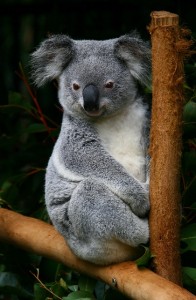“Cute” is a word usually associated with Koalas. However, these small sized bears have been recently discussed from an angle distant from that related to their scrumptious looks; one that uncovered the mystery of their deep voices.
Koalas have always puzzled scientists with their low-pitched bellows, which are considered about 20 times lower than they should be considering their body sizes. This estimation was made considering that the size of the vocal cords of an animal determines the pitch of their voices. Accordingly, smaller-sized animals are known to produce higher-pitched calls, but not Koalas.
The scientists involved in this study found that the vocal cords of a Koala are not large enough to produce such low-pitched bellows. However, a closer look at their body parts showed that Koalas have a second, much larger pair of vocal folds outside of the larynx, which helps in producing the voice once considered a mystery.
Study co-author Benjamin Charlton, of the University of Sussex in the U.K. said “We have discovered that koalas possess an extra pair of vocal folds that are located outside the larynx, where the oral and nasal cavities connect”. He described the newly discovered organ as “two long, fleshy lips in the soft palette, just above the larynx at the junction between the oral and nasal cavities.”
Charlton further added “We also demonstrated that koalas use these additional vocal folds to produce their extremely low-pitched mating calls.”
“To our knowledge, the only other example of a specialized sound-producing organ in mammals that is independent of the larynx are the phonic lips that toothed whales use to generate echolocation clicks” Charlton stated.
The research team affirmed that they intend to closely examine other mammals’ sound-producing organs in search of further unknown systems.
Click here to watch a short clip demonstrating a Koala mating call.
Sources:
HNGN: headline and Global News
Photo Credit:
Flickr.com




